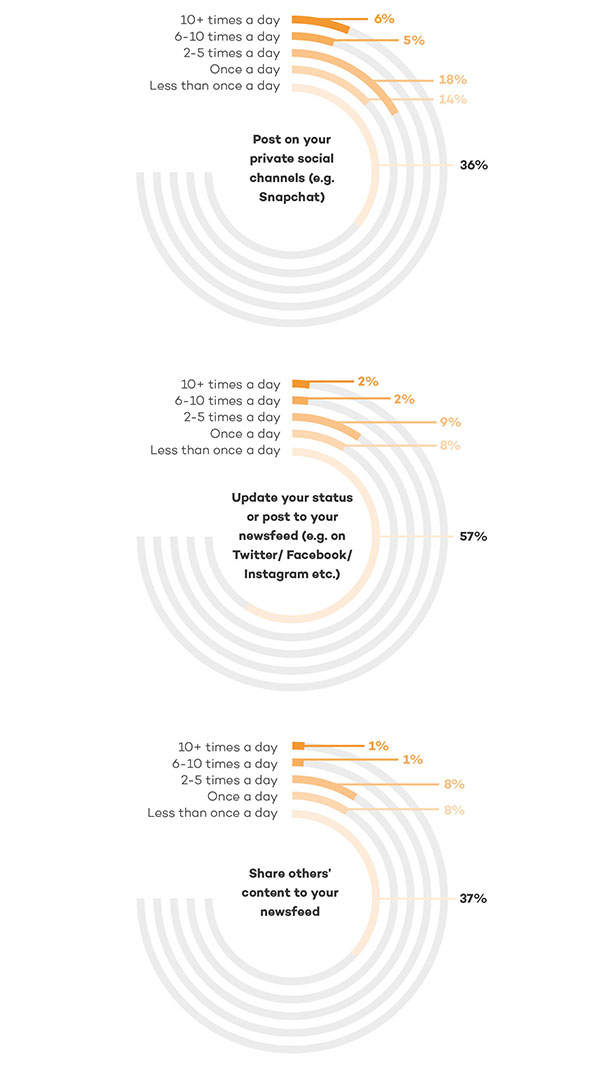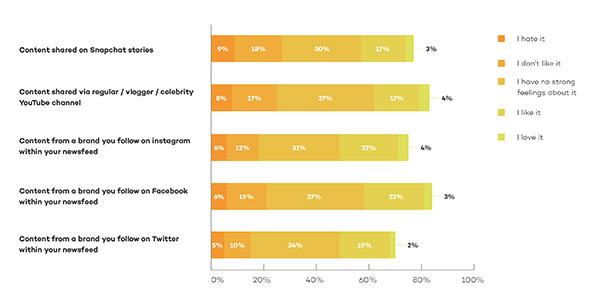By its very nature, dark social is impossible to track. Jaywing's Brían Taylor explores the most common and most unknowable channel.
Marketers have no concrete way of understanding how content is being shared or consumed on popular platforms such as Snapchat, encrypted messaging services like WhatsApp, or through older digital methods such as E-mail and SMS. This is because the links lack referral data which tells a web analytics package where traffic has come from. Nearly 84% of all online traffic referrals are now coming from dark social (RadiumOne, 2016). In the past, conversations and content were predominantly public and therefore trackable, but now the mass migration to messaging and private social apps offer a secure new conversation ecosystem. This poses a serious challenge for monitoring brand reputation and the true ROI of content.
Z are consciously selective about what they post publicly. They share content on dark social over twice as often as their ‘broadcast’ channels - 43% update their private channels at least once a day as opposed to only 21% for public (Figure 1). However, the average time spent on each leading app, whether private or broadcast, was very similar.
The appeal of sharing ‘moments’ which expire also shows this generation’s preference for living and sharing in the now. Despite previous generations’ goal to achieve social status through volume of engagement, this generation doesn’t carry the same measure of success. The study showed that less than a quarter (23%) only share content that they know their friends will respond to, suggesting that dark social plays well to the mentality of sharing simply due to their faith in the content quality.
There is no magic wand for tracking content success at this point in time, but URL shorteners, digging into referral traffic and modelling likely dark “reach” based on the earned content value are all methods you can deploy to glean some modest insight.

Figure 1 – Generation Z frequency of posting on social media
When you examine Z’s attitudes surrounding brands and dark social, the significance of “personal connection” begins to emerge. Snapchat is now the intimate channel Z truly share with their friends – it offers a digital personal space and subsequently the invasion of ads can be met with disdain.
If you’re looking to advertise to Z on social, there’s a marked difference to be noted between Z’s receptivity to ads on different channels. Z feel less negatively about brand advertising on Facebook, Twitter and Instagram compared to Snapchat and YouTube (27% of Z dislike ads on Snapchat stories – compared to 18% on Instagram, 16% on Twitter, 25% on YouTube and 21% on Facebook) (Figure 2).
Designing content that calls out audiences, their characteristics, and has a personal touch will ultimately perform well. Gen Z will share content that not only appeals to them, but that has a marked appeal to their mates, and will reward brands accordingly.

Figure 2 – Generation Z attitude towards brand advertising on social media
Key brand points
- Focus on improving measures you can see, as they are likely to be echoed on dark social. Negative sentiment publicly played out over Twitter is undoubtedly being mirrored privately in messages between peers.
- Utilise your known metrics for share and brand noise (prompted and unprompted) to glean insight into the probability of “immeasurable” noise - dark social should be part of your earned reach ROI and inform decisions on how much organic content is worthy of investment.
For more insights on Gen-Z, read Jaywing’s full report:
Nine questions brand marketers want to ask Gen Z - answered

